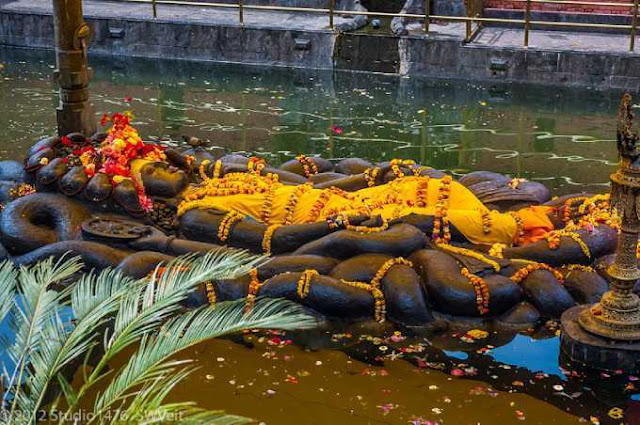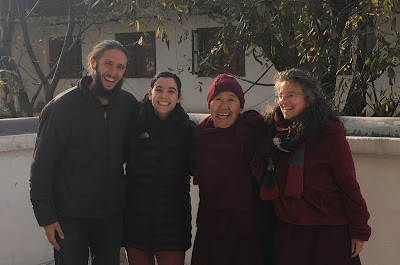Budhanilkantha Temple

Budhanilkantha Temple lies on the northern side of Kathmandu valley, just below the Shivapuri hill. The temple is associated with the Hindu god, Bishnu. A Bishnu statue of about 3m height in a sleeping position is the main attraction for people. The statue is wholly made out of stone and depicts the god, Bishnu with his four arms sleeping on the serpent-couch. The origin of the temple is yet unknown and unclear. But a famous myth tells that the present day temple was actually a field owned by a old guy named Nilkantha. While plouging the field, the second finger of the right feet of the statue was cut and blood started seeping out. After digging deep, the statue was excavated. The name Budhanilkantha was kept in accordance to the guy who found the statue. The temple houses a gurukul where the students are taught Sanskrit. The daily aarati of the statue that takes place two times a day, in the morning and evening is done by the young student of the gurukul. It seems th




